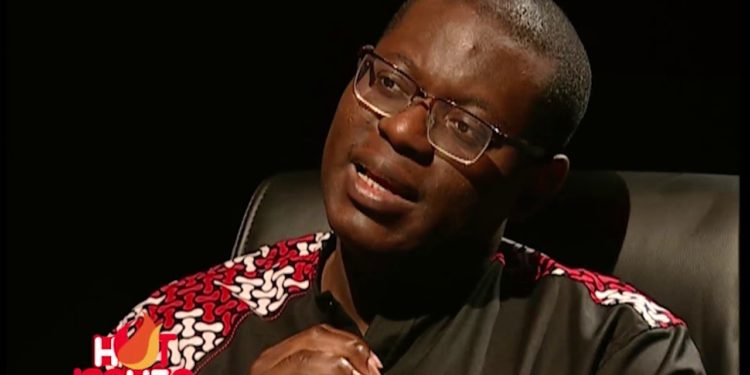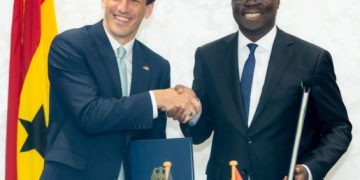Capital Investment Drops to 11% of GDP, Falling Short of ‘Ghana Beyond Aid’ Goals
Vice President of IMANI Ghana and President of mPedigree, Bright Simons, has raised concerns over Ghana’s diminishing capital investment as a share of GDP, a trend that runs counter to the country’s growth ambitions.
In a series of tweets, Mr Simons revealed that capital investment as a percentage of GDP has fallen to 11% in 2024, a significant drop from 17.4% in 2021.
This decline is particularly stark when viewed against the backdrop of the “Ghana Beyond Aid” initiative, which set a target to elevate capital investment to 32% of GDP by 2028.

“What those numbers simply mean, crudely speaking, is that Ghana is consuming its resources rather than investing for growth,” Mr Simons remarked, emphasizing the growing gap between the country’s economic realities and its initial aspirations.
The “Ghana Beyond Aid” agenda, which was championed by the previous administration, sought to reduce the country’s dependence on foreign aid by boosting domestic investment and fostering economic self-sufficiency.
However, Mr Simons’ comments suggest that the initiative has faltered in its execution, with little to show for its ambitious goals.
Moreover, he criticized the 13-member committee established to oversee the agenda for failing to release any reports on the initiative’s progress, questioning the level of accountability in the country’s development strategy.
Read tweets by Mr Simons below:
Today, I went searching for the final report of the Ghana Beyond Aid program as I have been doing for the past 2 months. No luck.
1. Just as there was no inception or baseline report accompanying the charter (except for a few tables in the charter), no final report appears likely to be published either. This is sad.
2. The Secretary to the 13-member committee, who doubles as the Technical Advisor to the Petroleum Hub (a project Nzema Activists and myself have had a few things to say about in recent times) has never published any progress reports either.
3. I always found certain things strange about the program. Both small and big things. For instance, the image chosen to illustrate the Ghana “beyond aid” concept was that of downtown Nairobi (see attached). Why? Is Nairobi somehow the benchmark of a society that has transcended foreign aid?
4. The principal goals of the program seemed odd. According to the program’s designers, Ghana must reduce “grants” to a bare minimum but not loans. “Grants” simply mean free money. What is the point of reducing free money but not foreign loans?
5. There was also a target to cut down on per diems and allowances for civil servants attending workshops and the likes funded by foreign bodies. Deadline for this: 2020. Okay. But I checked and found out that no attempt whatsoever was made to actually do this. Why have a target if you have no plan to actually work towards it?
6. Some of the goals are hard to quarrel with. For instance, the portion of exports that is made up of manufactured goods is meant to double by 2028 from 2017 levels. The average income of Ghanaians is also meant to more than double by the same timeline. 70% of Ghanaian households should have their own homes by the same 2028. Nice.
7. However, without any progress reports, we have no clue what exactly the committee did to push this glorious agenda forward. For example, according to the roadmap, BY 2023, applicants for passports are supposed to receive one within two weeks max. That presupposes that the committee was watching and tracking. Were they?
8. As for the economic indicators, we all know what happened in Ghana from 2021 onwards. But it was startling to see how far off the targets the country is now. For example, capital investment as a share of GDP was 17.4% when Ghana Beyond Aid was conceived. It was meant to rise to 32% by 2028. Today, it is below 11%. What those numbers simply mean, crudely speaking, is that Ghana is consuming its resources rather than investing for growth.
It is not too late for the Secretary of the Committee to at least publish the final report.









https://dailytimesgh.com/road-toll-use-modern-method-to-improve-revenue-collection-mr-amoako/